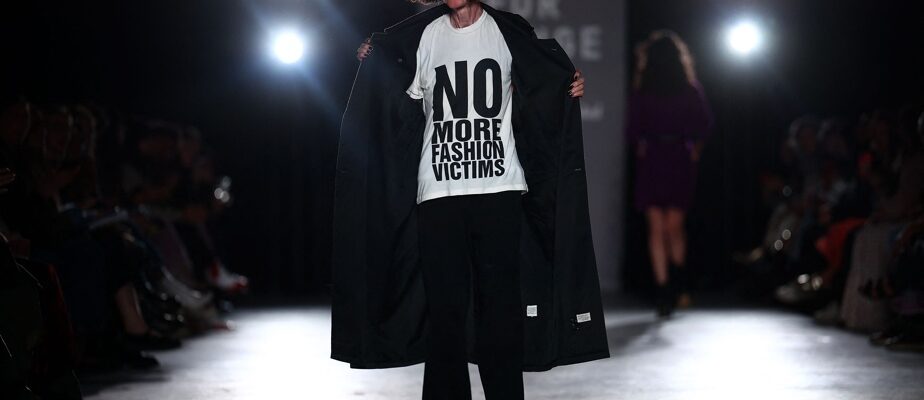(London) In an underground industrial space in central London, models parade, wearing floral dresses, trendy work outfits and denim… second-hand pieces, all picked up in the warehouses of the NGO Oxfam.
The charity teamed up with second-hand clothing site Vinted for the ‘Style for Change’ show, which took place on Thursday, the first day of London Fashion Week. Resale platform eBay also hosted a second-hand show.
Efforts that may nevertheless seem meager when the same evening, the “fast fashion” giant H&M was given a gigantic spotlight with a show by the star Charli XCX.
According to a study by the non-profit organisation Collective Fashion Justice, published in late August, just 3.39% of the 206 member brands of the British Fashion Council (BFC) have set an emissions reduction target.
Of these, only five have a goal aligned with the Paris Agreement, which seeks to limit warming to 1.5°C compared to the pre-industrial era.
By contrast, 44% of UK businesses have a climate action plan in place, according to recent data from insurer Aviva’s Climate-Ready Index.
“British fashion is lagging behind […] “compared to other industries in the UK,” says Emma Hakansson, head of Collective Fashion Justice, interviewed by AFP.
According to a 2018 report by Quantis, the global apparel and footwear industries were responsible for about 8% of global greenhouse gas emissions. And the textile industry could account for 26% of carbon emissions by 2050, a 2017 study by the Ellen MacArthur Foundation estimated.
Do you have to be giant to be green?
While the tartan giant Burberry now hopes to achieve carbon neutrality by 2040, “setting carbon footprint reduction targets” “for a small business is a real challenge,” underlines Caroline Rush, director of the BFC, in an interview with AFP.
“You need a team that can measure it, understand how to reduce it, and then share that information.”
The fashion federation is looking to train around 50 brands to do so by next March, as part of a programme funded by the British government.

PHOTO HENRY NICHOLLS, AGENCE FRANCE-PRESSE
The “Style for Change” fashion show
For its part, Copenhagen Fashion Week imposes a series of environmental requirements on all the brands that parade.
In New York, a “Fashion Act”, currently in draft, would require companies to reduce their emissions, including those of their supply chains.
“Leather, wool and cashmere come from supply chains” that are water-intensive and release methane, a greenhouse gas, Mr.me Hakansson: As for the factories that dye and treat the fabrics, they are powered by fossil fuels.
Avoid “micro-trends”
Solutions already exist for “greening” materials. British designer Stella McCartney long ago abandoned leather, preferring a plant-based alternative, mirum; and Arda Biomaterials is making a similar material from brewery waste in the UK.
Many brands also offer clothing repair or rental services.
Interviewed by AFP on the sidelines of the Oxfam fashion show that she created, sustainable fashion pioneer and stylist Bay Garnett believes that the younger generation has understood that second-hand “is a cool way to shop, finding your own style, a unique piece.”
But “cultivating a sense of personal style” helps avoid “following micro-trends” and slowing down the pace at which we renew the contents of our closets, believes the founder of Collective Fashion Justice.
But the entire recycling chain still needs to follow. Overwhelmed by donations, the UK’s main clothing sorting and collection organisation has warned that textile processing plants are nearing capacity.
